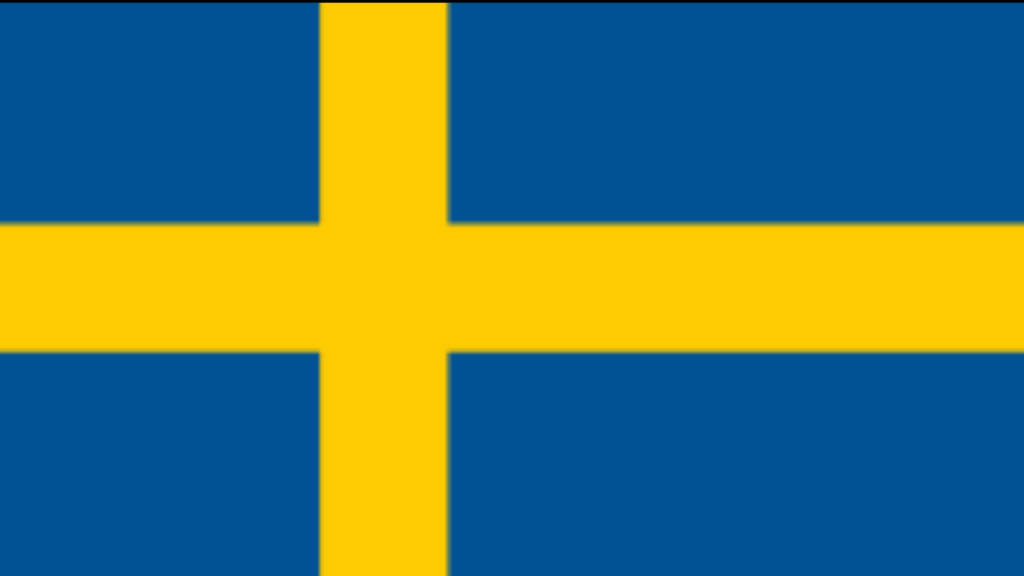Sweden sits tucked away in Northern Europe, a land filled with wonders waiting to be found.
From its stunning landscapes to its unique customs, this Nordic country holds secrets that might surprise many visitors.
What makes Swedish culture stand out? How do locals spend their free time during those long winter nights?
This blog reveals some of Sweden’s most interesting aspects, from its culture to social norms that shape daily life.
Swedish Life and Culture
Sweden’s everyday traditions and landscapes offer a peek into how nature and balance shape daily life.
1. Sweden Spans 173,860 Square Miles
Sweden ranks as the fifth-largest country in Europe by land area.
This vast space provides plenty of room for its relatively small population of about 10 million people, giving Sweden one of the lowest population densities in Europe.
The country stretches long from north to south, creating very different living conditions depending on where you stay.
2. Nearly 70% of Sweden is Covered with Forests
The Swedish landscape is filled with pine, spruce, and birch trees. These vast woodlands help make Sweden a top exporter of wood and paper products.
They also offer plenty of spots for outdoor activities, mushroom picking, and berry gathering for locals and tourists alike.
3. Sweden has About 100,000 Lakes
These water bodies dot the Swedish landscape from north to south.
Many Swedes own summer cottages near these lakes, where they spend their holidays swimming, fishing, and boating during the warm months.
- Lake Vänern is the largest and third-largest lake in Europe
- Many Swedes own summer cottages near lakes
4. Northern Sweden Experiences the Midnight Sun
Above the Arctic Circle in summer, the sun stays visible 24 hours a day for several weeks.
Locals often find it hard to sleep during this time, but make the most of the extra daylight hours with outdoor activities and celebrations.
- Occurs above the Arctic Circle in summer
- Happens because of the Earth’s tilt
5. Winter Brings Polar Nights to Northern Regions
The flip side of the midnight sun is the polar night, when the sun doesn’t rise at all for weeks during winter months.
Towns like Kiruna can go weeks without direct sunlight. Locals cope with this darkness through indoor hobbies, saunas, and winter sports.
Many homes and businesses use special lamps to help fight seasonal mood changes.
6. Swedes Practice “Fika” Daily
This coffee break tradition goes far beyond just grabbing a quick cup.
- The social institution where Swedes pause their day
- Usually happens around 10 AM and 3 PM
- Involves coffee, pastries, and chatting with others
Many Swedish businesses build fika breaks into the workday schedule, seeing it as essential for wellbeing and teamwork.
7. Sweden has Extremely High Coffee Consumption
Swedes drink about 8.2 kg of coffee per person yearly, putting them among the top coffee consumers worldwide.
Coffee became popular in Sweden in the 1700s and has grown into a national obsession.
Most homes have quality coffee makers, and Swedes often prefer their coffee strong and served without cream.
8. Most Swedes Remove Their Shoes Indoors
This practical habit stems from the harsh Nordic climate. With snow, slush, and mud common for much of the year, removing shoes helps keep homes clean.
- Guests automatically remove their shoes when entering homes
- Hosts often provide slippers for visitors
- Keeping shoes on indoors can be considered rude
9. Lagom Shapes Swedish Cultural Values
This uniquely Swedish concept roughly means not too much, not too little, just right.
Lagom influences everything from home design to social interactions.
It encourages moderation, fairness, and balance in all aspects of life. The idea reflects Sweden’s cultural emphasis on equality and reasonable living, avoiding both excess and scarcity.
10. Swedes Enjoy Lördagsgodis (Saturday Candy)
This sweet tradition allows children and adults alike to indulge in candy once a week.
The custom started in the 1950s as a dental health measure following studies that showed eating sweets once weekly caused less tooth decay than daily consumption.
Today, candy stores bustle on Saturdays as Swedes stock up on their favorite treats.
11. Allemansrätten Grants Nature Access Rights
This right of public access allows everyone in Sweden to roam freely through nature, even on private land, as long as they don’t disturb or destroy anything.
People can camp, hike, swim, and pick berries or mushrooms almost anywhere.
This freedom forms a core part of Swedish identity and their close relationship with nature.
Government and Society
Sweden’s values of equality, fairness, and strong public systems are woven into how the country is run.
12. Sweden’s Monarchy Spans Over 1,000 Years
While now mainly ceremonial, the Swedish monarchy remains one of the oldest in the world. King Carl XVI Gustaf, who took the throne in 1973, serves as head of state.
- Royal family performs official duties
- Represents Sweden internationally
- Real power rests with the elected parliament
13. Sweden Ranks Among the World’s Most Equal Societies
The country consistently scores high on gender equality indexes. Women make up nearly half the parliament, and policies support equal pay and opportunities.
- Policies support equal pay and opportunities
- Family-friendly systems help balance work and home life
- The government works to reduce income gaps
14. Sweden Banned Physical Punishment of Children First
In 1979, Sweden became the first nation to make it illegal to spank or physically punish children.
This groundbreaking law shaped how Swedes view child-rearing, focusing on respect and communication rather than punishment.
Today, parents use discussion-based discipline methods, and the law has helped reduce child abuse rates.
15. Sweden Accepts Many Asylum Seekers Per Capita
The country has a long history of welcoming refugees, taking in more per capita than most European nations. During the 2015 refugee crisis, Sweden accepted over 160,000 asylum seekers.
This open policy stems from humanitarian values and has made Swedish society increasingly diverse. Nearly one-fifth of residents are born abroad.
16. Parents Receive 480 Days of Paid Leave per Child
This generous parental leave policy can be split between parents until the child turns eight. During this time, parents receive about 80% of their salary.
The system actively encourages fathers to take leave through “daddy months” that cannot be transferred to mothers, helping promote gender equality both at home and in the workplace.
17. Sweden had the First Female Bishop
In 1997, Christina Odenberg became the world’s first woman to be ordained as a Lutheran bishop.
This milestone reflected Sweden’s progressive stance on gender equality in religious institutions.
Today, women serve at all levels of the Church of Sweden, which was the state church until 2000 and remains the largest religious organization in the country.
18. Swedes Pay Some of The Highest Taxes Globally
Income taxes can reach above 55% for high earners. These taxes fund extensive public services, including free education through university, comprehensive healthcare, excellent public transportation, and generous social benefits.
Most Swedes support this system, seeing it as an investment in social welfare and equality for all citizens.
19. The World’s Oldest Central Bank is Swedish
Founded in 1668, Sveriges Riksbank is the oldest central bank still in operation.
Created to handle state finances after a private bank collapsed, it now sets monetary policy and ensures financial stability.
The Riksbank also issues Swedish kronor and has pioneered digital currency research among central banks.
20. A Swedish Inventor Created the Nobel Prize
Alfred Nobel, who made his fortune by inventing dynamite, established the Nobel Prizes in his will.
First awarded in 1901, these prestigious honors recognize achievements in physics, chemistry, medicine, literature, peace, and later, economics.
The annual Nobel ceremony in Stockholm brings global attention to Sweden each December.
21. Sweden Connects to Denmark via the Öresund Bridge
This engineering marvel, opened in 2000, created a direct link between Sweden and Denmark. The 16-km connection includes a bridge, an artificial island, and a tunnel.
It changed the region by allowing thousands to commute daily between Copenhagen and Malmö, creating an integrated economic zone that benefits both countries.
Facts Related to Swedish Inventions
From life-saving seatbelts to global music hits, Sweden has a long track record of smart, creative ideas.
22. Sweden Created Global Brands Like IKEA and Spotify
These companies show Sweden’s blend of practical design and technical skill. IKEA revolutionized furniture with its flat-pack approach and simple designs.
Spotify changed how people consume music worldwide. Other successful Swedish companies include H&M in fashion, Volvo in automotive safety, and Ericsson in telecommunications.
23. The Three-Point Seatbelt Came from Sweden
Volvo engineer Nils Bohlin invented this life-saving device in 1959.
Instead of patenting it for profit, Volvo made the design freely available to all car manufacturers to save more lives.
This safety feature has saved over a million lives worldwide, demonstrating Sweden’s commitment to welfare over pure profit.
24. Sweden is a Top Innovation Hub
Despite its small size, Sweden consistently ranks among global innovation leaders.
The country invests heavily in research and development, spending about 3.3% of its GDP in this area.
Swedish universities and companies focus strongly on solving real-world problems through new technologies, particularly in green energy, healthcare, and digital solutions.
25. The Moose Symbolizes Swedish Wildlife
These massive animals roam Swedish forests, with a population of about 300,000. They feature prominently in Swedish culture, tourism, and warning signs along highways.
Moose hunting season is an important tradition, and moose meat appears in many Swedish dishes.
These animals can weigh up to 700 kg and stand 2.1 meters tall at the shoulder.
26. ABBA Became Sweden’s Biggest Music Export
This pop group sold over 380 million records worldwide after winning Eurovision in 1974.
Their catchy songs have been translated into dozens of languages, and the musical “Mamma Mia!” brought their music to new generations.
ABBA helped establish Sweden as a pop music powerhouse, paving the way for other Swedish artists and producers.
27. The Ice Hotel Melts and Rebuilds Annually
Located in Jukkasjärvi, this unique hotel rebuilds itself every winter using ice from the nearby Torne River.
Artists create new room designs each year, with ice sculptures, furniture, and even glasses made from ice. Guests sleep in thermal sleeping bags on ice beds.
The concept has inspired similar hotels worldwide but remains a uniquely Swedish attraction.
28. Jukkasjärvi Also Features an Ice Church
Each winter, this northern town creates a church entirely from ice and snow. The structure hosts weddings, baptisms, and concerts before melting in spring.
The ice walls’ acoustics create special musical experiences, and the changing light patterns through them create a magical atmosphere for religious ceremonies.
29. Sweden Aims for Record-High Recycling Rates
The country recycles nearly 99% of household waste, turning it into energy or new products.
Sweden’s waste management is so effective that it imports garbage from other countries to fuel its waste-to-energy plants.
This commitment to sustainability extends to everyday life, with extensive recycling stations in most neighborhoods.
30. Stockholm Hosts the Original Ice Bar
This novel concept features a bar kept at -5°C year-round, where everything from the walls to the drinking glasses is made of ice.
Visitors wear thermal capes and gloves while enjoying drinks served in ice glasses.
The bar uses ice from the Torne River and has inspired similar venues worldwide, though the Stockholm location remains the original.
31. Kebnekaise Mountain Tops the Swedish Landscape
Standing at 6,926 feet, this mountain in Lapland is Sweden’s highest point.
The peak consists of two summits, a southern glacier-covered one and a northern rocky one.
Climate change is affecting the mountain, with the southern glacial peak shrinking yearly.
The area attracts hikers, climbers, and skiers who challenge themselves on its slopes.
Final Thoughts
What matters most?
Sweden offers lessons in finding the middle ground, not too much, not too little.
Their approach to family time, work balance, and access to nature shows how thoughtful systems can work.
Want to take action after reading? Try adding a small fika break to your day.
Or maybe test the Saturday candy idea with your family.
Got more Swedish facts to share? Tell us in the comments!





















